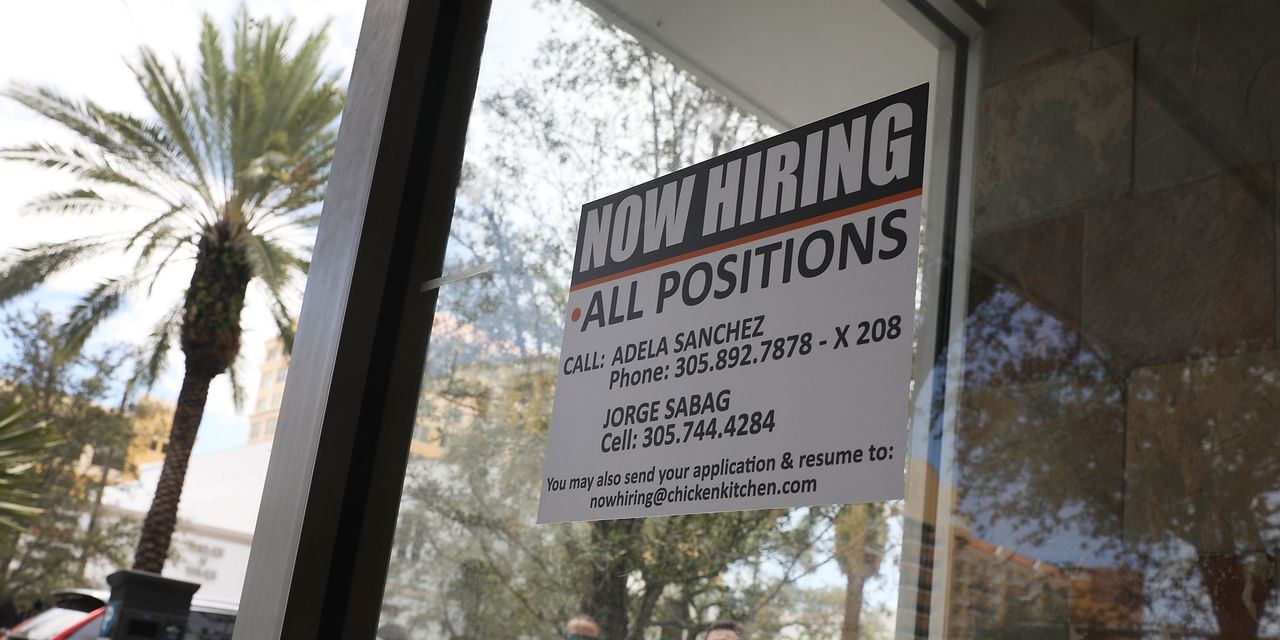U.S. stocks closed higher Friday, with the technology-heavy Nasdaq Composite rising sharply, after a weaker-than-expected October jobs report sent Treasury yields lower.
Investors were also watching corporate earnings, with Apple Inc.’s stock falling Friday after the giant company delivered soft guidance.
How stock indexes traded
-
The Dow Jones Industrial Average
DJIA
rose 222.24 points, or 0.7%, to close at 34,061.32. -
The S&P 500
SPX
climbed 40.56 points, or 0.9%, to finish at 4,358.34. -
The Nasdaq Composite
COMP
added 184.09 points, or 1.4%, to end at at 13,478.28.
For the week, the Dow gained 5.1%, the S&P 500 climbed 5.9% and the Nasdaq jumped 6.6%. The Dow scored its biggest weekly percentage gain since October 2022, while the S&P 500 and Nasdaq each saw their strongest weekly jump since November 2022.
What drove markets
The U.S. stock market booked big weekly gains, with all three major benchmarks climbing Friday as the latest jobs report fueled investor optimism that the Federal Reserve may be done raising interest rates.
“The market is more and more confident that the Fed is done hiking,” said Tom Graff, chief investment officer at Facet, in a phone interview Friday.
The U.S. added a modest 150,000 new jobs in October in a sign of a cooling demand for labor, as higher interest rates take a bite out of the economy. Economists polled by The Wall Street Journal had forecast 170,000 jobs.
The jobs report, released Friday by the Labor Department, showed growth was a “little below expectations and a lot below last month’s number,” said Graff. Jobs growth running in the area of mid-100,000 to mid-200,000 is a “totally normal pace for an economic expansion,” which should allow inflation to continue easing, he said.
The October employment report showed a gradual cooling of the job market that would be welcome by those who want the Federal Reserve to stop raising interest rates, said Richmond Federal Reserve President Tom Barkin on Friday.
“The good news here is that the slowdown will likely keep the Fed on the sidelines going forward. One of their key concerns has been an overheated economy, especially after last quarter’s GDP growth, and this suggests that problem is going away,” said Brad McMillan, chief investment officer for Commonwealth Financial Network, in a note.
Chris Zaccarelli, CIO at Independent Advisor Alliance, said in emailed comments the jobs report was “perfect” for a “risk-on rally” in markets.
Stocks rallied this week as Treasury yields fell. The yield on the 10-year Treasury note
BX:TMUBMUSD10Y
saw it biggest weekly decline since March, finishing Friday at 4.557% based on 3 p.m. Eastern Time levels, according to Dow Jones Market Data.
See: 10 and 30 year Treasury yields head for biggest weekly drops since last November and March 2020
Prices of stocks and bonds rose this week after the U.S. Treasury set plans for less debt issuance on the long end of the yield curve than anticipated, the Fed announced that it was it keeping it benchmark rate steady, and some softer-than-forecast economic reports.
An ISM barometer of U.S. business conditions at service-oriented companies such as retailers and restaurants slowed in October to a five-month low of 51.8%, suggesting the economy has softened. The reading was below the 53.0% forecast of economists polled by The Wall Street Journal. The index recorded 53.6% in September.
Some of the sharp gains in stocks and bonds may be tied to “short covering” after traders were caught leaning the wrong way in markets, said Scott Wren, senior global market strategist at Wells Fargo Investment Institute, in a phone interview Friday. That is, traders may have been betting that rates would be higher and stocks would be lower and “the data that we were going to get most of this week was going to be supportive of those positions,” he said. “But it wasn’t.”
Investors also have been monitoring corporate earnings season for the third quarter. “A rally in the last two months of the year is going to hinge on how this earnings season goes,” said Facet’s Graff.
Meanwhile, Wells Fargo’s Wren said that he thinks analysts’ estimates for S&P 500 earnings for the fourth quarter and 2024 are probably too high.
Companies in focus
Steve Goldstein contributed to this report.
Read the full article here













Leave a Reply